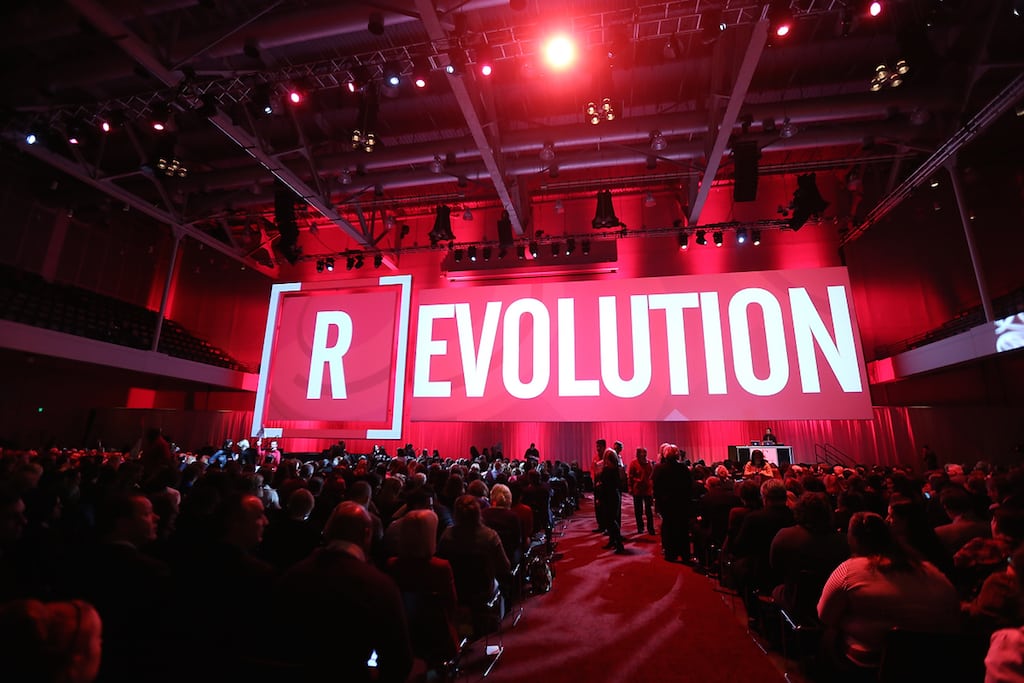Skift Take
The move toward open-learning meeting space, where attendees can roam among casual “campfire” sessions, is helping Millennials personalize their educational journey in a more spontaneous and organic process.
This is an excerpt from our FREE Skift Trends Report, What Millennials Want in Meetings, brought to you in partnership with Meetings MeanBusiness.
Download the Report, Free!
Convention centers are providing more opportunities for open-learning conference spaces in unstructured prefunction spaces outside the traditional ballroom setting with standard classroom seating. Millennial attendees have shown a preference for roaming from one educational session to the next if the specific subject matter or speaker is not quite what they anticipated.
Kelly Peacy, CMP, is the senior VP of education and events for the Professional Convention Management Association (PCMA). She heads up the design of PCMA’s two major annual events—Convening Leaders and EduCon—where she is at the forefront of next generation conference design that creates more personalized networking and educational experiences for attendees of all ages.
Both PCMA events provide an experimental platform to test out new conference design concepts that planners can experience before implementing them in their own events.
For example, at the Convening Leaders conference in Chicago’s McCormick Place convention center this past January, she and the Freeman event tech company set up bleachers for 100 people behind the main screen during the general sessions so planners could watch the action behind the scenes.
Peacy also engages with PCMA’s annual “Twenty In Their 20s” selection of emerging Millennial age conference professionals, which is now in its second year, to better understand shifts in their meeting experience needs.
We spoke with her about the future of non-linear meeting design, specifically with regard to Gen Y planners and attendees.
Skift: How much internal conversation at PCMA is there about Millennial psychographics?
Kelly Peacy: That’s a really good question. We haven’t done any research to the extent that we probably should and probably will. What we do have is our Twenty in Their 20s leadership area. They’re from all segments of the industry and they applied and have been interviewed and reviewed. We tap into their knowledge and expertise as much as we can, but I would really like to do a little bit more research into what Millennials are expecting from a meeting experience.
Skift: What are some of your primary takeaways after engaging with these people over the last two years?
Peacy: My takeaways are that their expectations are not the norm that we have seen over the last 20 years in this industry. This whole movement towards personalization of meeting experience really is significant for this group. They don’t like to be treated as a number, they want to be seen as a unique person, and their expectation is that their experience should be just as unique.
From what I’ve learned, Millennials don’t necessarily think in a linear fashion the way that other generations do. So that’s part of the reason for our shift toward more open space learning. We, as planners in this industry, like to put things in a very linear schedule, but that doesn’t necessarily mean that Millennials want to or will follow what we put together.
Skift: Is it true that PCMA tries to show planners how to create those types of personalized experiences is the new open space format at Convening Leaders, where everyone can move easily from session to session, versus sitting in a breakout room?
Peacy: That’s absolutely true. When we’re designing that, we’re definitely thinking of a younger attendee who wants to be an active participant in this industry and personalize their education. They may not have as many years of experience as the majority of our attendees, but their expectations are valid and we want to acknowledge those.
So absolutely, that design of creating your own education experience and making it work and valuable for you is absolutely part of our plan. With the open format, people can take a few minutes of content in, they’ll take what they need, and if they don’t like it, they’ll walk away from that space and go someplace else. That’s the beauty of open space learning. You can come and go as you please without offending a speaker or other people. That’s what we’ve heard attendees say that they really like about that concept.
Skift: In terms of integrating the local destination into an event, there’s a generational shift where Millennials are craving interaction with local thought leaders and cultural influencers. Do you have plans to integrate that more into PCMA events?
Peacy: Yes, I think that’s what makes destinations unique is that local flavor. The local person who lives there, has decided to spend their time and build their career in these places. Especially with regards to Millennials, they’re very much about what’s real and authentic. Searching out and seeking that local flavor in destinations and then bringing that into your event, it really appeals to that group of people. It also appeals to other generations as well because it’s something different.
I couldn’t agree with you more, definitely we’ll see more of that at Convening Leaders in Vancouver and in Austin in future years.
Recently we launched a FREE Skift Travel Trends Report, What Millennials Want in Meetings, brought to you in association with Meetings Mean Business. Above was an extract from it. You can download the full report here for all the insights.
Have a confidential tip for Skift? Get in touch
Photo credit: PCMA's Convening Leaders conference is considered a leading test location for large scale meeting design experimentation. PCMA

